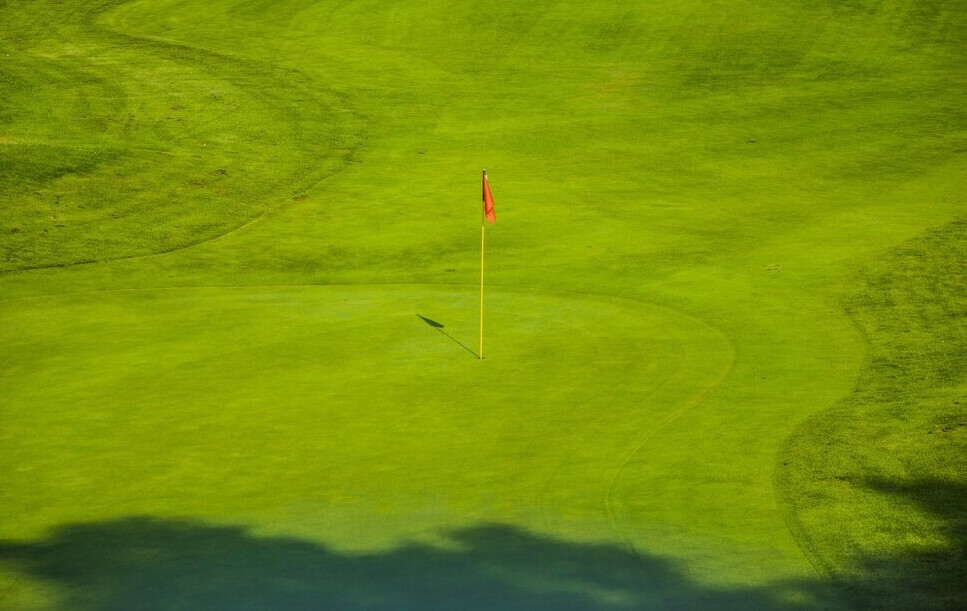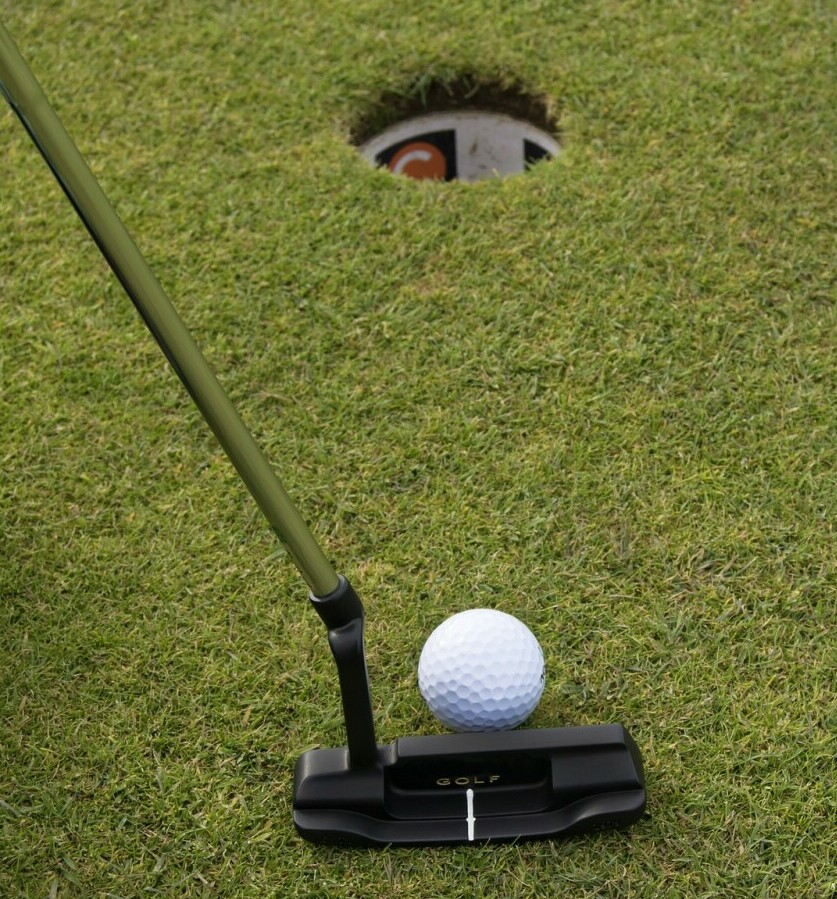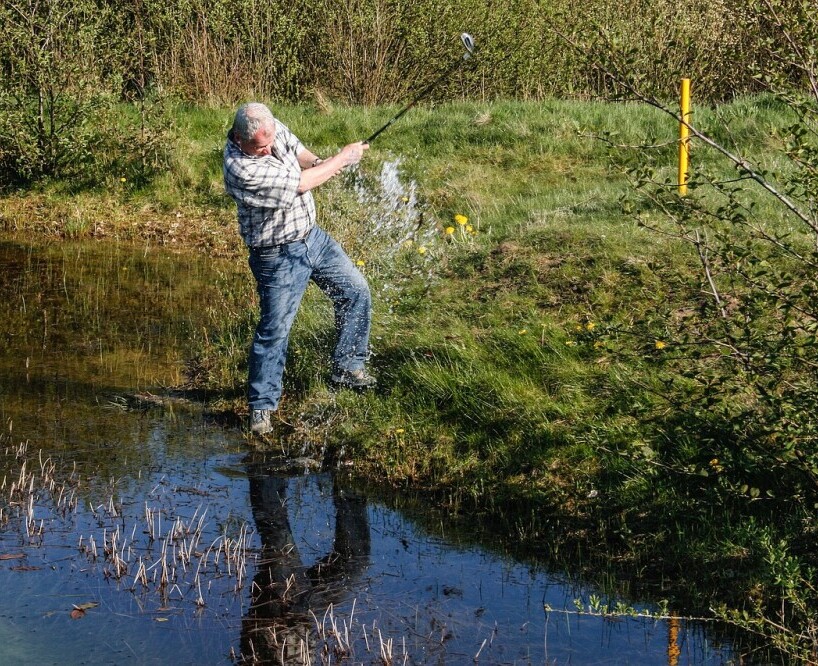What Is Fringe In Golf?


Fore! Quick note: a few links here are affiliate links. If you snag gear through them, I earn a small commission — no extra strokes added to your game.
Ever stood on a golf course, looked around, and wondered what in the world the fringe is all about? Well, it’s that ring of neatly mown grass wrapping right around the green. You’ll find it a tad longer than the green but much shorter than the fairway. It’s like the goldilocks of grass—just right in the middle. The golf viking is here to talk about fringe.
The fringe is more than just a pretty border. It’s a smart design choice that serves some real purpose. It is primarily there to make sure golf balls don’t roll off the green too easily, working a bit like a safety net. Plus, it gives players a distinct boundary, offering some clarity in their short game strategy. It marks the transition from fairway to green, which will definitely affect how you approach your shots. It’s truly the middle ground between fairway and green.
Get this—the texture and cut of the fringe can make or break a putting strategy. It’s a challenge built into the course, daring players to master the transition zone. Knowing where the fringe is can help you plan your shots better, decide on the right club, and figure out the kind of shot you want to go with.
Overall, the fringe plays a big part in how a golf course is crafted and how it plays. It’s not just about aesthetics; it’s critical to guiding players and shaping the game’s flow. The next time you’re out on the course, take a moment to appreciate how this small strip of terrain influences every shot you take. So why does fringe matter?
The fringe plays a big role in short game strategy. Improve your skills around the green with short game mastery.
Ready to level up your golf game? Click here.

The Importance of Fringe in Golf Strategy
When you’re on the course, the fringe might not be the first thing on your mind, but ignoring it could be a big mistake. This patch of grass tests your skill, like a silent partner waiting to change the game. Understanding its role is crucial for leveling up your strategy so that you can master all parts of the golf course.
So, why is the fringe so important? For one, it introduces a challenge right before the green. It calls for precision and care in how you approach your next shot. The fringe can subtly influence where your ball ends up, demanding careful club selection and shot planning. You can’t just muscle your way through; it takes finesse. Getting onto the fringe means that you’ve cleared the fairway, but you’re not quite on the green yet.
Playing smart from the fringe means knowing how different clubs interact with this unique area. Some days, it’s about a gentle putt. Other times, a chip might be more in line. This adaptability is part of what makes golf intriguing and keeps avid players engaged. This will all depend on the course and how the designers choose the layout.
Strategically, using the fringe to guide your shots can help manage risk and reward. A little extra planning can make sure that your ball stays in play and close to the pin, rather than wandering off into the rough or a bunker. It’s a tiny strip, but it plays a huge role in determining how you feel walking up to the next shot.
Embracing the tactical opportunities the fringe provides can turn you from a good player into a great one. Consider the way it frames each approach and transforms how you handle the challenges that every round offers. How do we play from the fringe?
Sometimes, a chip from the fringe is smarter than a putt. Learn the basics in what is chipping in golf?

Mastering the Fringe: Techniques and Tactics
Handling the fringe with confidence is all about knowing what to do when your ball lands there. This isn’t about guesswork; it’s about understanding the nuances that come with playing from this spot. It will play a part in your strategy for how to approach the green.
When you’re dealing with shots on the fringe, think about your club selection first. Many players grab for their putter out of habit, but depending on grass length and lie, it might not always be the best choice. Sometimes a pitching wedge or even a nine-iron is perfect for a tiny chip that rolls up to the hole—just like a putt but with a bit more control. Once again this will dependent on the layout of the course, the slopes of the greens, and the lie of your ball. There can be a multitude of factors that affect this decision, and every situation is different.
The key here is in the touch. It’s all about how soft you can make your shot without losing the control needed to land near the hole. A brisk chip with a wedge can provide just enough backspin to keep your ball on course, making it an efficient move if you’re dealing with longer fringe grass. Playing from the fringe requires finesse, you need to hit the ball hard enough to escape the fringe without rolling your ball past the hole.
Adjusting your swing when tackling the fringe is crucial. Play it smarter, not harder. Your normal swing might overpower such a delicate area. Something a little more calculated, going easy on the power and hard on the precision, often results in a better outcome. The distance to the hole can also impact your decision.
Practice is another significant piece of the puzzle. Next time at the range or practicing at home, throw a few into the fringe section and practice your chip and putt shots. Experiment with the speed and the spin. The muscle memory you gain from such practice can do wonders on the course. Getting those practice swings in can help you get the feel for how to hit your ball off of the fringe.
Working on your technique can turn the fringe from a worry into an advantage. Smart play from this grassy area ensures you’re preparing to either set up for a successful putt or to recover from a longer shot that might have otherwise been lost. So what have we learned from the golf viking today?
Reading the slope and speed from the fringe is similar to putting on the green. Sharpen your consistency with the best putters for distance control.

The Impact of Fringe Conditions on Your Golf Game
When you think about the impact of the fringe on your golf game, it’s the little details that can have a big influence. Different courses have different approaches to how they maintain their fringes. It gets interesting when you start comparing mow heights. Typically, the fringe is cut longer than the green but shorter than the fairway, creating a transition zone that’s unique.
This variation in mow cut lengths affects how your ball rolls, which essentially is the difference between a great shot and one that leaves you scratching your head. A shorter cut may give your ball a fast track to the hole, while a slightly longer fringe requires more power in your play. Each course is different and you will need to use your best judgement and experience.
Weather and seasonal changes can alter these conditions too. A wet fringe can slow down the ball, while a dry one speeds it up. Familiarizing yourself with these factors on each round can guide any necessary adjustments to your strategy. You need to consider all the factors when trying to decide which club to use as well as how hard you want to hit the ball.
If you frequently find yourself battling with the fringe, practicing in different conditions is invaluable. Not just playing in diverse weather, but also on courses with varied grass cuts can help you learn to anticipate ball movement better. In addition, practice with your range of clubs to adapt to fringe conditions and learn what works best for you.
If you want to be a well rounded golfer, you will want to know how to hit from the fringe. Learning how to do this will help you get closer to the hole and therefore drop strokes from your scorecard. It’s all part of knowing how to handle every area of the course.
The fringe is all about managing expectations and refining techniques. Embrace the challenge it brings; learn its quirks. With time and patience, you can turn dealing with the fringe from a frustrating part of the game into a skill that sets you apart as a player. I’ll see you out on the golf course, fringe master.
Since many golfers confuse the fringe with the green, it helps to understand course layout better. Learn more in what’s the green in golf?


